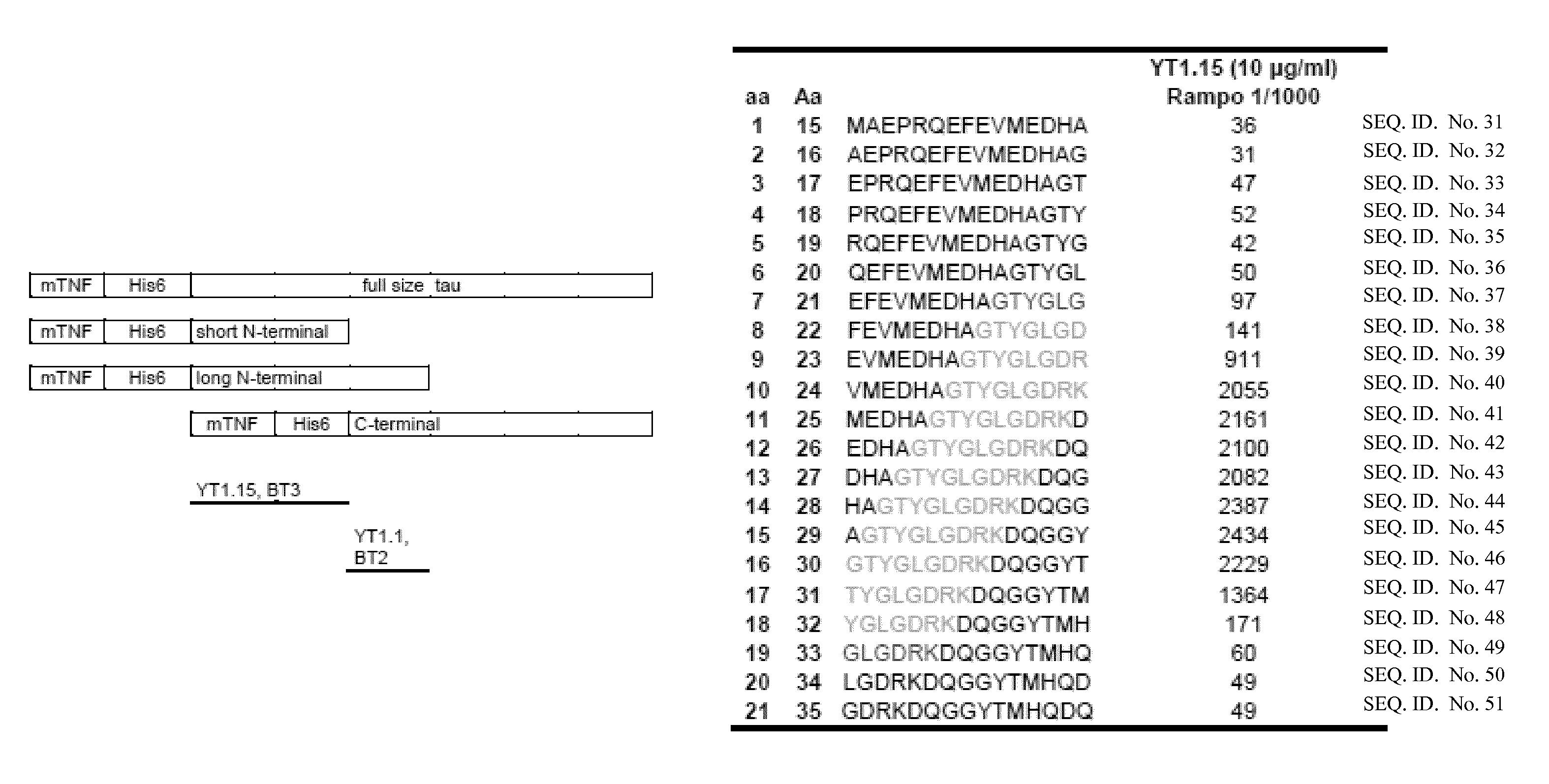Antibodies to phosphorylated tau aggregates
a technology of antibodies and aggregates, which is applied in the field of affinity tools for oligomeric forms of tau proteins, can solve the problems of high false positive and false negative cases, large clinical problems, and early and objective diagnosis
- Summary
- Abstract
- Description
- Claims
- Application Information
AI Technical Summary
Benefits of technology
Problems solved by technology
Method used
Image
Examples
examples
1. Humanized Tau Models
[0331]When purified from the humanized yeast strains, protein tau maintains its (hyper)phosphorylation status and its propensity to seed the formation of tau filaments as shown (Vandebroek et al., 2005). Mass spectrometry study confirmed 13 different phosphorylation sites in yeast-purified human tau, all of which were previously reported in AD brain (data provided by J. Gobom, U. Goteborg, Sweden; data not shown).
2. Generation of Antibodies Specific for Aggregated Tau.
[0332]Yeast-purified tau was used for the immunization of BALB / C mice. After fusion and screening of monoclonal antibodies (mAbs), 15 clones were selected based on the difference in immunoreactivity toward recombinant non-phosphorylated tau purified from bacteria and tau isolated from yeast.
3. Phosphorylation Specificity of Antibodies Specific for Aggregated Tau.
[0333]The phosphorylation specificity was initially tested on extracts obtained from the humanized wild type yeast strain and its congen...
PUM
| Property | Measurement | Unit |
|---|---|---|
| apparent molecular weight | aaaaa | aaaaa |
| apparent molecular weight | aaaaa | aaaaa |
| apparent molecular weight | aaaaa | aaaaa |
Abstract
Description
Claims
Application Information
 Login to View More
Login to View More - R&D
- Intellectual Property
- Life Sciences
- Materials
- Tech Scout
- Unparalleled Data Quality
- Higher Quality Content
- 60% Fewer Hallucinations
Browse by: Latest US Patents, China's latest patents, Technical Efficacy Thesaurus, Application Domain, Technology Topic, Popular Technical Reports.
© 2025 PatSnap. All rights reserved.Legal|Privacy policy|Modern Slavery Act Transparency Statement|Sitemap|About US| Contact US: help@patsnap.com



